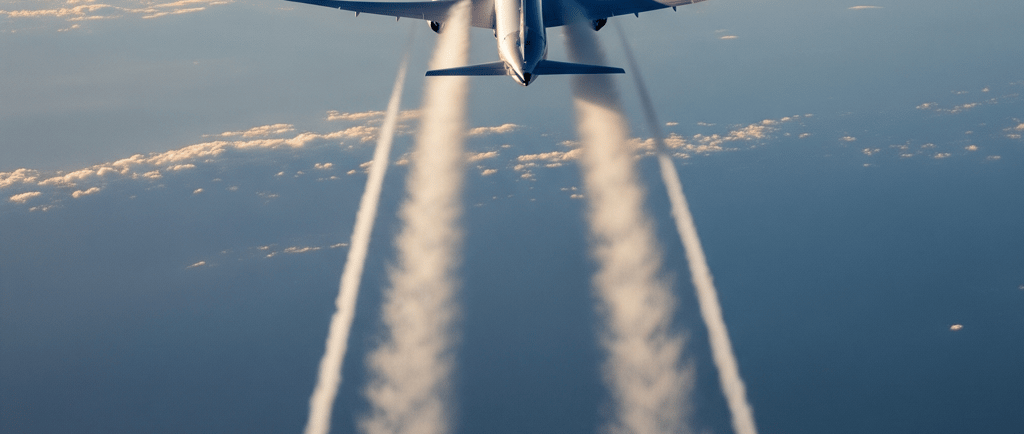Don’t fear failure. Master the art of Survival. If Air Transat Flight 236 Can Survive Engine Failure at 34,000 Feet, So Can Your Business or Career
Imagine soaring at 39,000 feet, cruising smoothly across the Atlantic, when suddenly both engines shut down. Silence in the cockpit. Fuel gone. Now what?: This was the reality for Air Transat Flight 236 on August 24, 2001, when it faced what should have been a fatal situation—complete engine failure mid-air. And yet, the Airbus A330 not only survived but landed safely in the Azores. All 306 people on board lived to tell the tale.
COVER STORIES
Hanif Lakdawala
7/17/20253 min read


Don’t fear failure. Master the art of Survival.
If Air Transat Flight 236 Can Survive Engine Failure at 34,000 Feet, So Can Your Business or Career
Imagine soaring at 39,000 feet, cruising smoothly across the Atlantic, when suddenly both engines shut down. Silence in the cockpit.
Fuel gone. Now what?:
This was the reality for Air Transat Flight 236 on August 24, 2001, when it faced what should have been a fatal situation—complete engine failure mid-air. And yet, the Airbus A330 not only survived but landed safely in the Azores. All 306 people on board lived to tell the tale. What happened in that cockpit offers a compelling metaphor for businesses and professionals career navigating crisis: if a plane can glide to safety with zero power, you can steer your business or career through adversity.
Why It Matters: Captain Robert Piché Proves that even the most dire situations can be survived with skill, calm, and preparation.
The Azores Miracle: What Really Happened
Air Transat Flight 236 departed from Toronto, headed to Lisbon. Mid-flight, the pilots noticed odd fuel readings and decreasing pressure. Unbeknownst to them, a fuel line damaged during maintenance had caused a massive leak. Within minutes, thousands of kilograms of fuel had vanished
At 39,000 feet and hundreds of kilometers from the nearest airport, both engines flamed out. The plane became a glider. Captain Robert Piché, a former bush and glider pilot, and First Officer Dirk De Jager, had one goal: land safely. They managed to glide over 120 kilometers without power and safely landed at Lajes Air Base in the Azores. It remains the longest glide ever recorded by a commercial airliner
Parallel to Business:
Unexpected failures happen: Like Flight 236’s fuel leak, businesses and career face sudden crises (market crashes, tech failures, PR disasters, Job Loss).
Preparation saves you: Pilots train for emergencies; businesses need risk management plans.
Leadership in chaos: Captain Piché’s calm decision-making mirrors crisis leadership in CEOs and leadership.
Business and Career Survival Lessons from Flight 236
Lesson 1: Stay Calm Under Pressure
Fact: 80% of business failures stem from poor crisis response (Harvard Business Review).
Action Plan: Train teams for stressful scenarios (e.g., mock drills for cyberattacks, supply chain breakdowns). Adopt the "OODA Loop" (Observe, Orient, Decide, Act) used by fighter pilots.
Lesson 2: Adapt or Crash
Flight 236: Pilots repurposed the aircraft as a glider when engines failed.
Real Life case study:
Netflix pivoted from DVDs to streaming.
Airbnb shifted to "virtual experiences" during COVID.
Stat: 52% of Fortune 500 companies since 2000 have disappeared due to inflexibility (Accenture).
Lesson 3: Trust Your Team
Flight 236’s Crew: Co-pilot Dirk De Jager’s calculations were critical for landing.
Business Insight: Companies with strong teamwork are 5x more likely to recover from crises (Gallup).
Lesson 4: Prepare for the Worst
Aviation Rule: Pilots always plan alternates.
Business Application:
· Buffer funds (3–6 months’ expenses).
· Redundancy plans (e.g., dual suppliers, backup servers).
Lesson 5: Early Warning Signs Matter:
Pilots noticed fuel anomalies early but initially dismissed them. Businesses, too, often ignore warning signs—declining sales, employee disengagement, creeping costs. Ignoring small issues can lead to catastrophic failures.
Lesson 6: Switch from Routine to Crisis Mode:
When the situation escalated, the pilots moved from routine protocols to emergency procedures. Leaders must do the same—adapt their mindset and strategy quickly when facing disruption.
Lesson 7: Change the Destination if Needed:
The plane didn’t reach Lisbon—it rerouted to Lajes Air Base. Likewise, businesses must pivot when original goals become unrealistic due to unforeseen events.
How to Build a "Flight 236-Proof" Business
Toolkit for Resilience
Risk Audits – Identify "fuel leaks" (e.g., cash flow gaps, single-point failures).
Scenario Planning – Play out "what ifs" (e.g., losing a top client).
Decentralize Power – Avoid over-reliance on one leader/supplier.
"Flight 236 didn’t survive by luck—it survived by skill and systems. Your business and career can too."
Build Your Own Glide Plan
Here’s how you can survive any business or career freefall:
Monitor Key Metrics Daily: Cash flow, engagement, customer feedback.
Train for Crises: Simulate worst-case scenarios regularly.
Empower Teams: Encourage problem-solving across roles.
Be Ready to Pivot: New opportunities often come dressed as disruptions.
Stay Mentally Strong: Mindset is half the battle. Calm breeds clarity.
"A giant fuel leak nearly killed us—yet focus, skill, and teamwork turned catastrophe into salvation." — Captain Robert Pich
Final Thought
You may not be at 39,000 feet, but sometimes it feels like it. The pressure, the silence, the uncertainty. Yet, like Air Transat 236, your situation is not doomed. With awareness, adaptability, and resilience, you can glide through turbulence and land safely—perhaps even stronger than before.
Don’t fear engine failure. Master the glide.
Insights
Explore valuable resources for aspiring entrepreneurs today.
Connect
Support
info@forbusiness.co.in
© 2025. All rights reserved.
info@forbusiness.co.in
